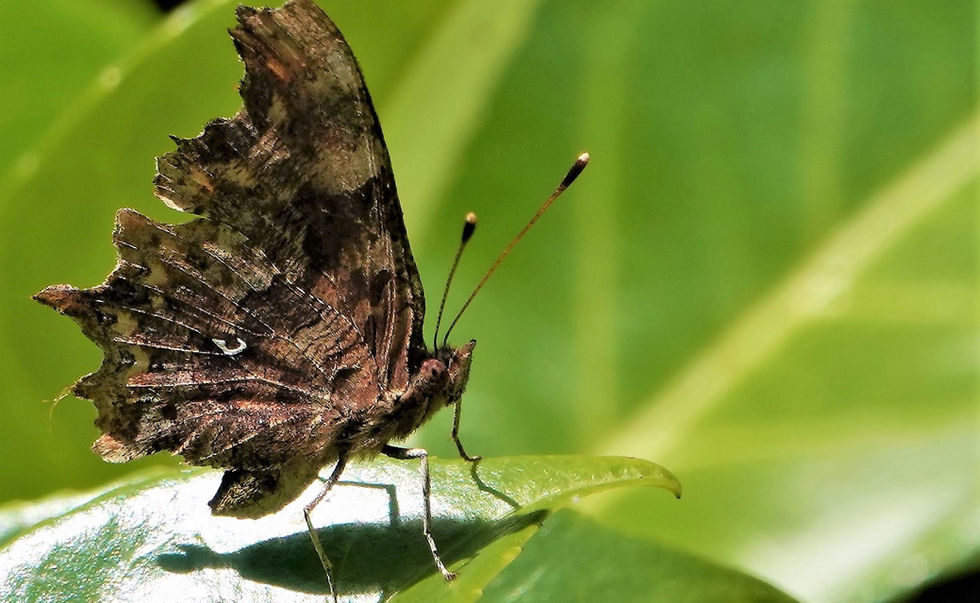Also known an the Anglewing Butterfly
The Comma butterfly is a food generalist (polyphagous) butterfly species
To prevent predation, both the larval and adult stages exhibit protective camouflage, mimicking bird droppings and fallen leaves, respectively
Although the species is not migratory, the butterflies are strong fliers, resulting in an open population structure with high gene flow and increased genetic variation.
Fully grown butterflies have a wingspan of about 45 mm, or 1.8 inches.
The name Comma butterfly derives from the small white “C” shaped marking resembling a comma on the ventral side of its wings.
Comma butterflies can exhibit both mimicking and polyphenism, a phenomenon where multiple morphs exist in a population. Due to their orange and dark brown/black appearance, the butterflies resemble fallen leaves when their wings are closed. P. c-album adults can also undergo one of two morphs: the directly developing morph or the diapausing morph.
*There are twenty known subspecies of the Anglewing (Comma / Question Mark) butterfly family.
* The two best ways to differentiate Question Mark butterflies from Comma butterflies are to:
1) count the black lateral dots on the dorsal side of the wing. The Question Mark will have 4 dots, whereas the Comma will only have 3 dots.
2) look at the white "C" on the ventral side of the hind wings. If it has a white dot with it, it is a Question Mark. If it doesn't have a white dot, it is a Comma.
Otherwise, their appearances are virtually identical !!
Avg. Wingspan: 45 mm / 1.8 "
Diet: adults eat fermenting fruit and tree sap. (Rarely flower nectar)
Class: Insecta, Order: Lepidoptera
Kingdom: Animalia, Phylum: Arthropoda
* Being Brush-footed butterflies, Commas have a short pair of fore legs that are used to taste food, and two pairs of longer rear legs that are used for propulsion.









